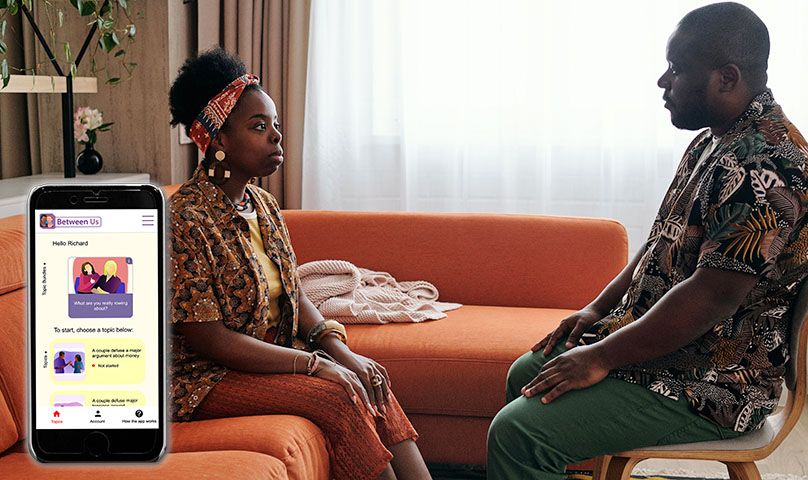How to listen so your partner feels heard
Published in Blog by Kate Thompson on November 28th 2022

Leading therapists at couple therapy charity Tavistock Relationships have designed the Between Us app to help people have a better relationship with their partner, and to bring high quality relationship support to more people.
The app helps couples to improve communication, bringing them closer together and helping build their ability to resolve issues. The topic in the app called ‘How to listen so your partner feels heard’ explains why it’s important not to second-guess what our partners are thinking, and outlines three techniques for couples to practise to improve their listening skills.
Kate Thompson, couple psychotherapist at Tavistock Relationships, explains:
“Couples are often so overwhelmed with depression and anxiety about the state of their relationship, they are not free to listen to their partner. What their partner is saying is drowned out by their critical ‘internal’ monologue.
“Communication breakdown is one of the most common symptoms that couples present with at Tavistock Relationships. Stress and anxiety are the enemy of being able to emotionally connect with a loved one.
Couples who have enough energy and are brave enough to try something new, are amazed at the profound changes that can be triggered in trying a simple communication exercise together.
“Couples who have enough energy and are brave enough to try something new, are amazed at the profound changes that can be triggered in trying a simple communication exercise together.”
Technique 1: 'Summarising'
Invite your partner to choose a subject that is not overladen with feeling, and not part of an ongoing battle between you. Ask your partner to speak for a few minutes about this subject. Tell your partner that during this time you will not make any comment about it or respond in any way, other than to summarise back to them what they have said.
Once you have summarised what your partner has said, ask them whether they feel that they have been heard properly. Although this kind of activity can feel artificial to begin with, it's often the case that the awkwardness wears off after a while, and it all begins to feel much more natural.
Technique 2: 'Reflecting'
With this technique, the listener gives the speaker an experience not just of having been heard, but having been listened to in an emotionally attuned way. This requires the listener to distinguish between their own feelings and those of the speaker – something which might seem simple in theory, but which can be difficult in practice.
For example: “I can hear you were really angry when I invited my mother over without consulting you first.” Or: "I hadn't appreciated quite how much you had been looking forward to the holiday."
Ask your partner to add to their summary of what you said to them, their understanding of what you might be feeling. Then ask your partner to see things from your perspective - how might it feel to experience the things which you have described?
It is important, as before, not to interrupt each other, although this time the activity includes commenting briefly in ways that convey an appreciation of what you or your partner is feeling.
Technique 3: ‘Validating’
Validating requires the listener to show an appreciation of the speaker’s position, without necessarily agreeing with it. For example: “I can see why you were upset and angry with me for inviting my mother over without consulting you first”.
When you use validation, you convey to your partner that you have acknowledged and heard their point of view, even though you may have your own perspective on it.
When you use validation, you convey to your partner that you have acknowledged and heard their point of view, even though you may have your own perspective on it. It can help your partner understand that you accept their feelings and viewpoints, without necessarily feeling the same way.
Ask your partner to add to their reflective comments by conveying an acceptance and endorsement of what you have been feeling. And also, of course, do the same for your partner in return.
Again, doing this activity may feel awkward. It might also feel that you're being expected to agree with your partner, even though in this instance you do not. But validation is different from agreement - by validating what your partner is feeling, you are telling them that their feelings are understandable in their situation.
Further information about the app

by Kate Thompson
Joint Head of Couple Therapy for Depression, Projects and Business Development
Formerly Head of Strategic Development at TR, Kate is the Project Head for Couple Therapy for Depression Training of NHS practitioners.

